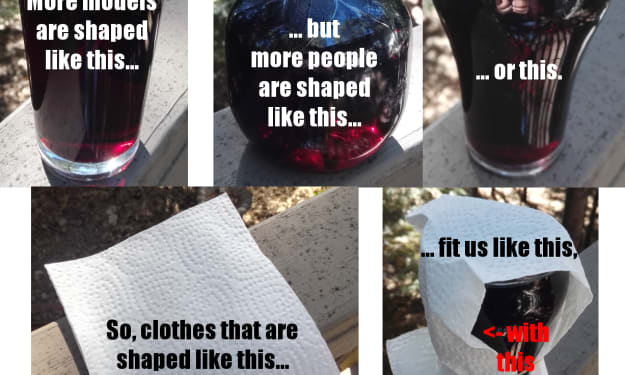
After the extinction of wooly mammoths but before the invention of smartphones, my third-grade class did a unit on the United States Postal Service. Thirty of us eight-year-old students practiced addressing letters to our classmates until we had learned to include all the relevant information in all of the right places. Some of us forged elaborate "stamps" in crayon in the upper right-hand corners of our envelopes. Some of us even did it all in cursive.
We were among the last students to complete this exercise as part of the regular curriculum.
The value of teaching cursive handwriting to children is questionable at best, but does the lost craft of address formatting (cousin to the lost art of letter writing) belong in the same category? It's true that written communication has largely gone paperless, as our physical mailboxes became more susceptible to unwanted junk mail than our electronic ones. However, whether we are returning merchandise, keeping in touch with loved ones away from the prying eyes of data merchants, sending gifts, or doing business with any of the many firms that do not accept electronic payments, we all run into situations where our best option is to use the postal service.
Furthermore, even if you were never formally taught how to address a letter or package, it is the kind of skill that employers and officials just expect everyone to know. It's also easier than it may at first look. When I worked in shipping, I was surprised at how many people, young and old, didn't know how to write a postal address. So, if you have never used the postal service before, or if it's been a long time and you need a quick refresher, here is a simple guide to formatting an address label so that it reaches the right person at the right time.
Step 1:Make sure you are using a correct and complete mailing address with a street address, city, state, and zip code.
The correct spelling is especially important for the street name. On the other hand, it doesn't matter to the postal service if you misspell the recipient's name -- though it does matter to the recipient!
If you don't know the zip code or the state abbreviation, you can look them up online using the rest of the address information. Many cities have more than one zip code, so make sure you include the street address in your search.
In the United States, personal addresses usually look like this:
[First name] [Last name][House or building number] [Street name], [Apartment number (if any)][City], [State] [Zip code]
If you have enough vertical room and not enough horizontal room, you can put the apartment number and the zip code on their own separate lines, under the lines where they are shown in the example.
Business addresses can be more complicated, especially if you are writing to a specific person at a large company. Instead of just writing the recipient's name, you may have to write:
- [Company name]
- [Department name]
- Attn: [[[First name] [Last name]] or [Job title]]
- [Street address]
- [City], [State] [Zip code]
Some companies are so large and well-known that they don't use standard street addresses, but they will always have a city, state and zip code. If a business lists an unusual-looking address on their website, send an e-mail or call them to make sure you have the correct mailing address.
Finally, some people and businesses receive mail at a post office box instead of a street address. Since a P.O. box is located at the post office and there is generally one post office per zip code, the P.O. box number takes the place of the street address, like this:
- [Recipient's name]
- P.O. Box [Box number]
- [City], [State] [Zip code]
Note that this format is only for official post office boxes. If you are writing to someone who rents a box from a private mailbox store, you will need to include the store's street address as well as the box number.
Every country has its own unique postal system and address format. Some do not use street addresses, and many do not use zip codes. When you send something internationally, you are responsible for following the postal regulations of both your country and the receiving country.
That was a lot of information. I promise it gets easier from here.
Step 2: Neatness counts, so work carefully on a flat, even surface. If you are sending an envelope, put a piece of paper inside to even out the bumps (don't seal the envelope yet). If you are sending a package, write the address information on a label or piece of paper and stick it to the package at the end.
Step 3: With your envelope or label turned so that it is wider than it is tall, write the recipient's information in the middle. Leave a little space on the right for postage, and a little more space on the left for the return address. Plan ahead so that your writing doesn't become cramped and hard to read. If you have a hard time estimating the space that you will need, start by writing the last line (city, state, and zip code) near the bottom edge, then work your way up.
Step 4: Write your name and address in the upper left-hand corner, smaller than the recipient's address. This is technically optional, but it is a good idea for two reasons. First, if the postal service is unable to deliver something for any reason, they will try to return it to the address in the upper left-hand corner. That's why this is called the return address. Second, if the recipient isn't sure who is sending them mail, they may refuse it or throw it away.
Step 5: Double-check what you wrote. Is it accurate? Is it legible? If you made a mistake in ink, fix it with correction fluid or tape. Do not scribble over or cross out mistakes, as this makes the information harder to read and can cause major delays in processing.
If you followed Steps 1-5, then congratulations! You are ready to successfully use the postal service.
About the Creator
N. Sutton
I'm a jack of all trades, master of some, often treading water, sometimes treading asphalt. I wear my hair long and play the ukulele.






Comments
There are no comments for this story
Be the first to respond and start the conversation.